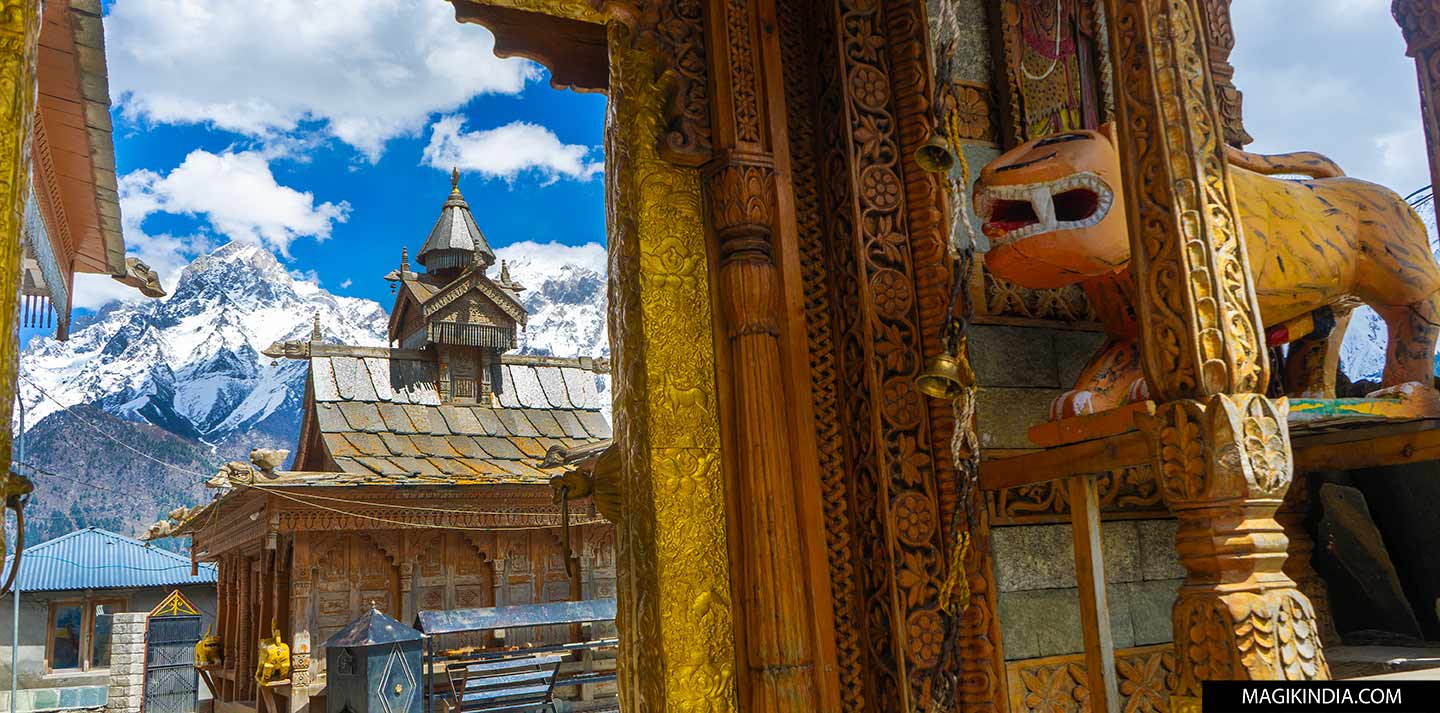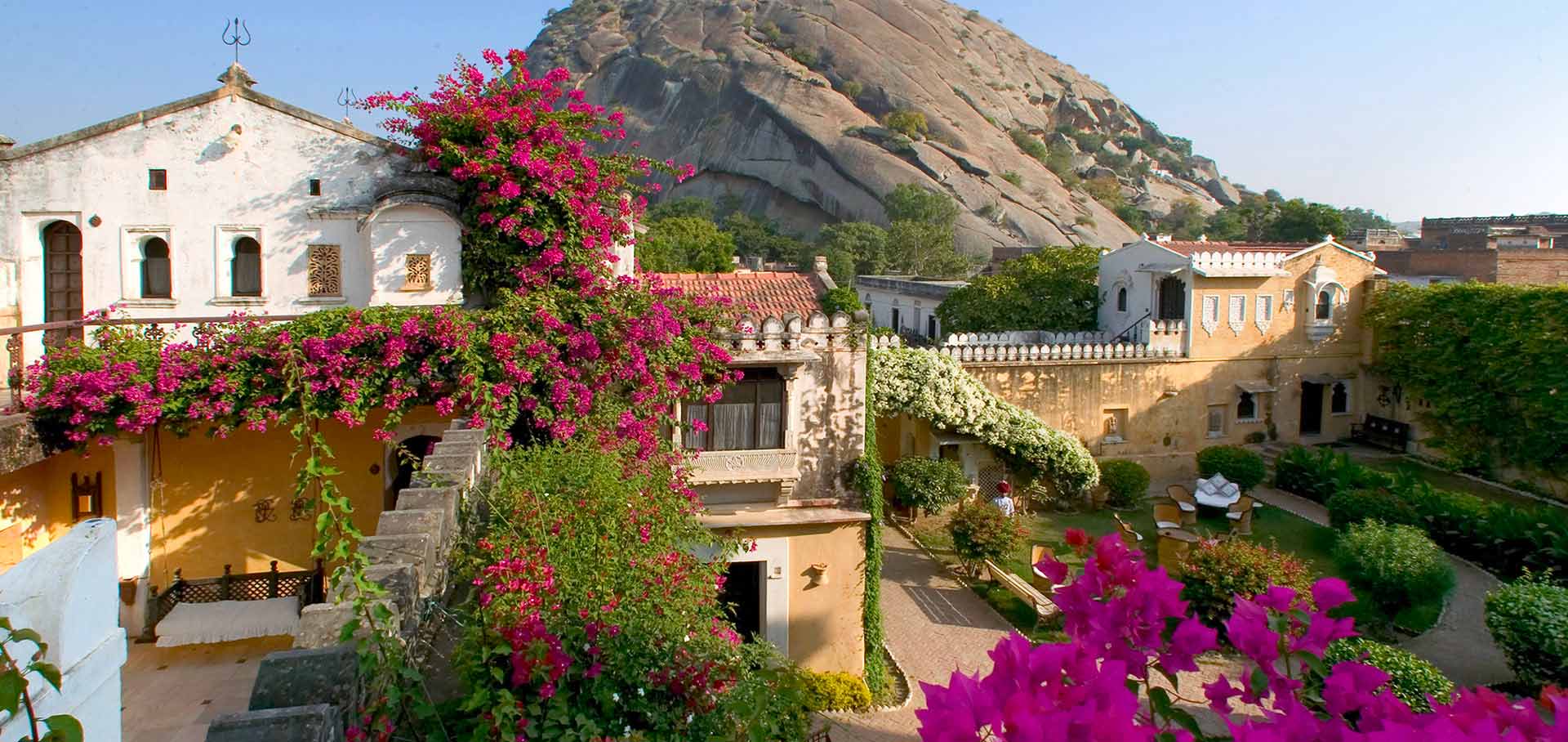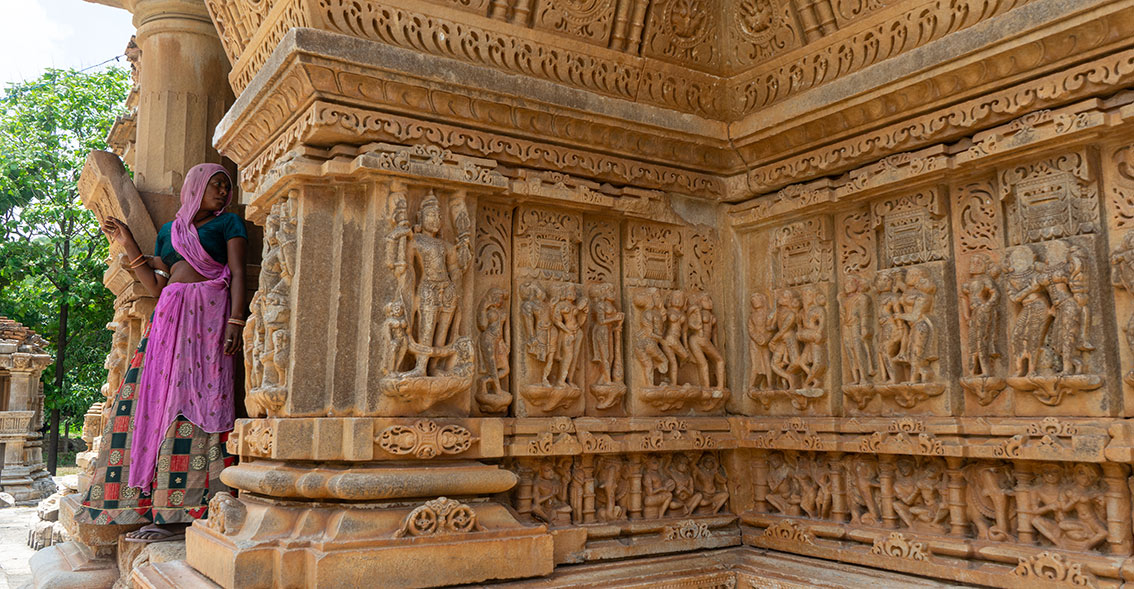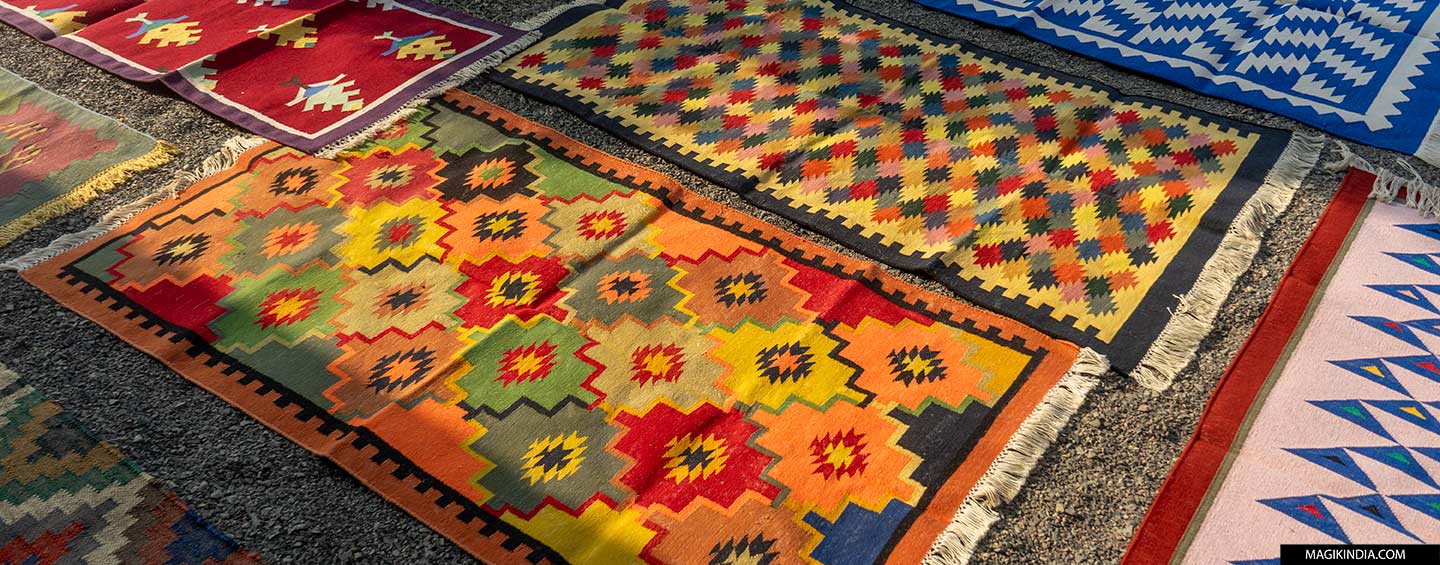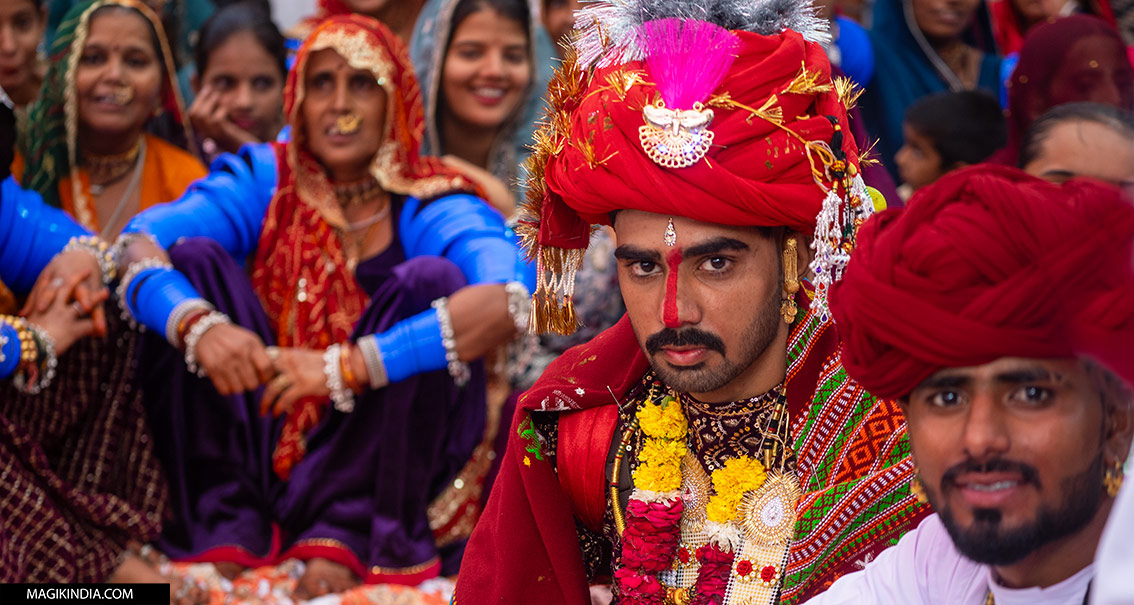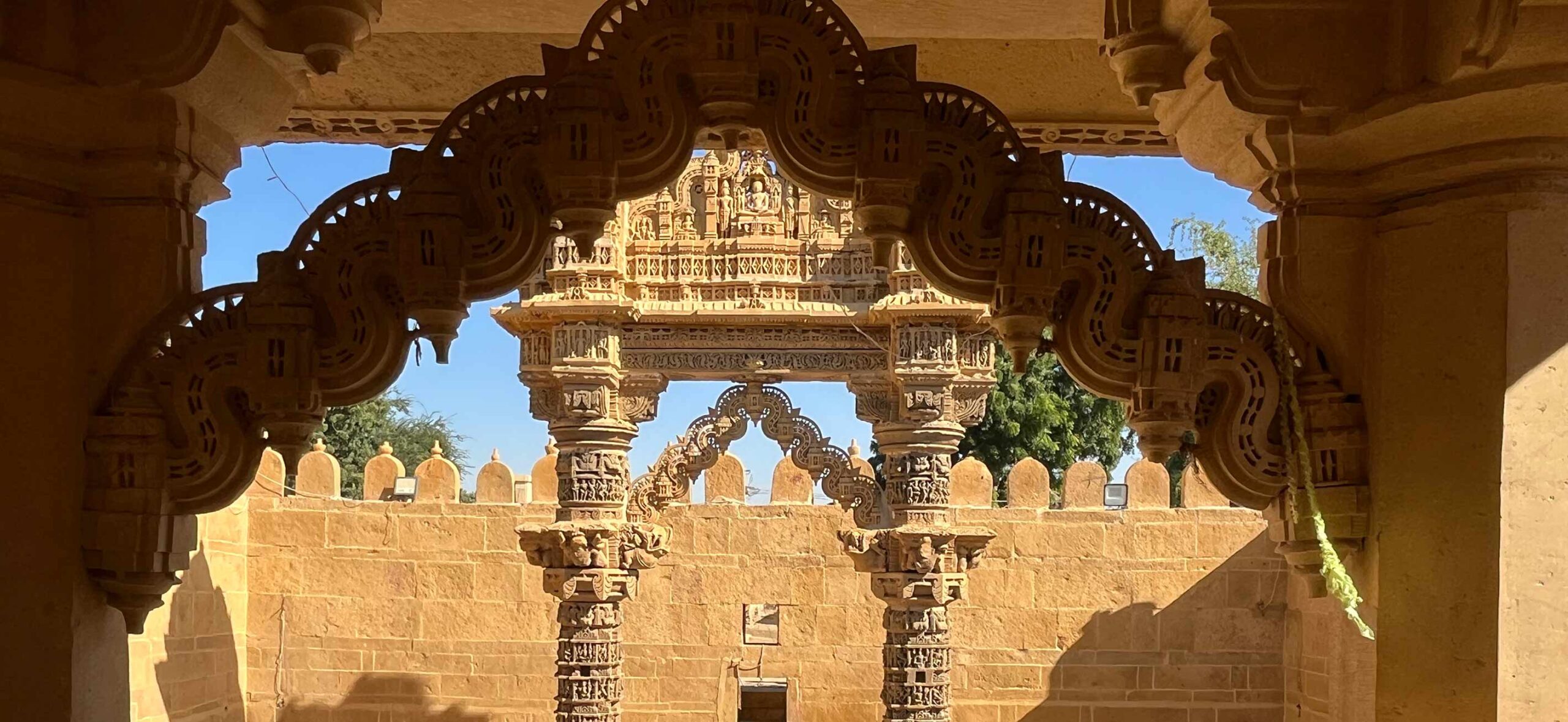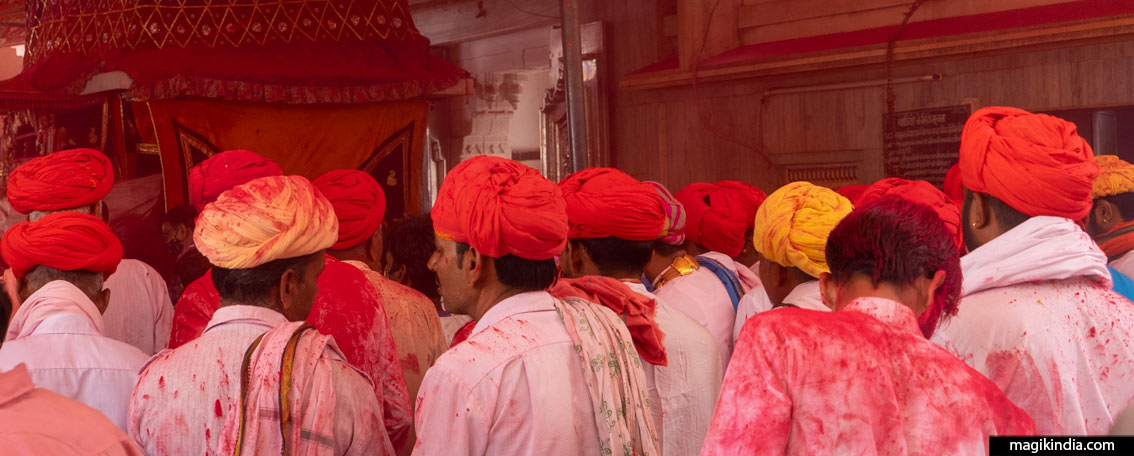
Charbhuja Garhbor, the temple of the Gurjars of Rajasthan
The origin of Charbhuja Garhbor
The history of the Charbhuja Garhbor temple is intimately connected with the Hindu god Krishna and the five Pandava brothers, the main characters of the Indian epic Mahabaratha: After a long life on earth (125 years), Lord Krishna decided to leave for Goloka, his final resting place. The Pandava brothers, for whom he had been a spiritual teacher, then asked him how they could live without him. Krishna therefore went to see Vishwakarma ji, the divine craftsman, to create a statue in his image. He then gave this idol to the Pandavas for their daily worship and went to his divine realm.
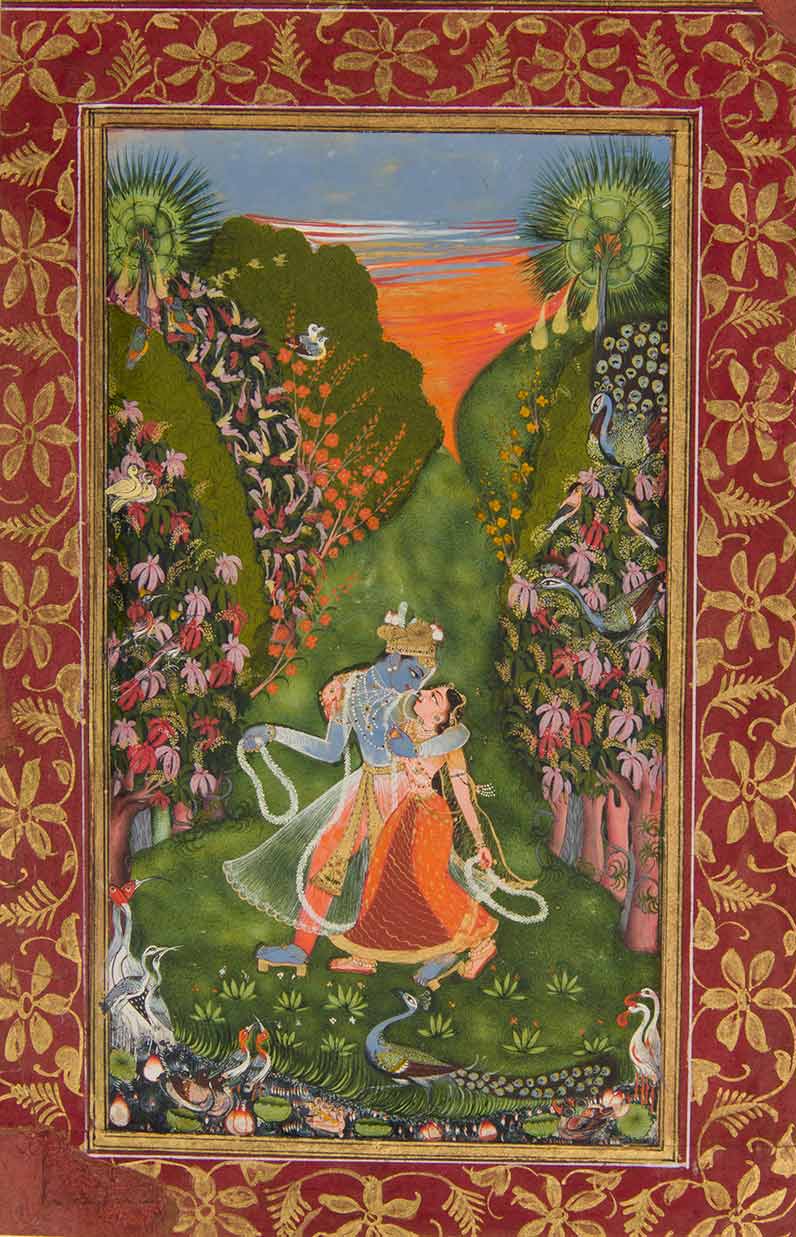
Miniature painting depicting Krishna and his beloved Radha at Goloka | Musée Met
Goloka Vrindavan or Vaikunthdham is Krishna’s “heaven”. It is described in the Brahma-samhita texts as a “cintamani-dhama”, a place where all desires are fulfilled. The palaces are made of black jasper, dotted with “wish trees” that provide all kinds of food on demand and cows that give milk at will. It is symbolically the transcendental form of the god, the ultimate destination of life which, when reached, frees us from the material world.
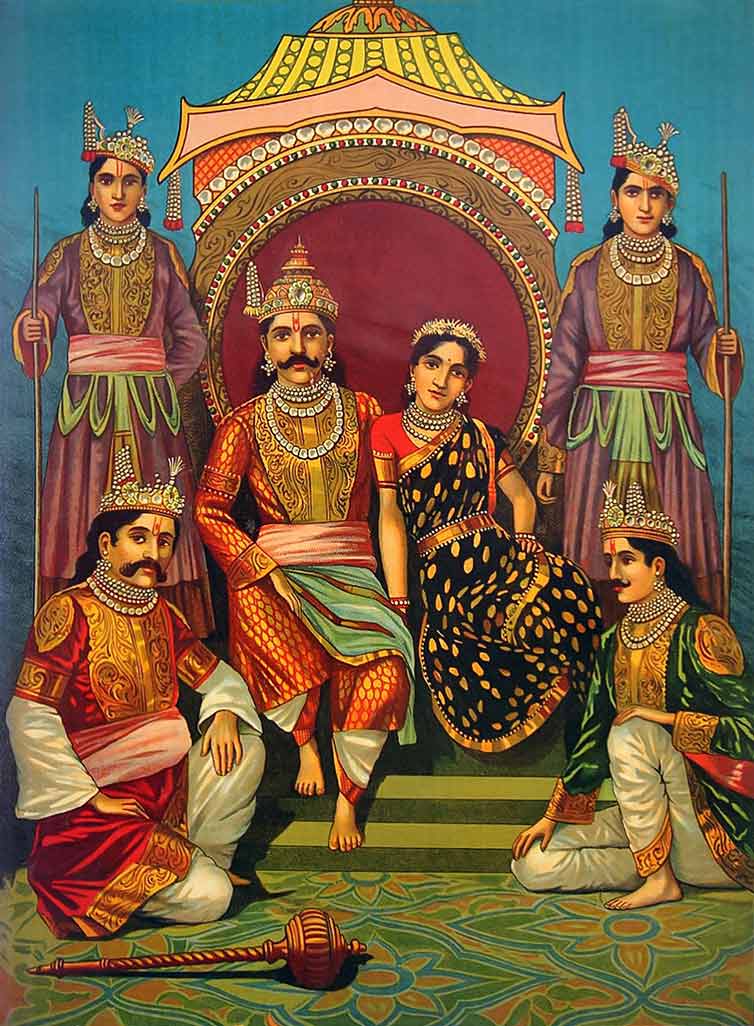
Representation of the Pandavas with their wife Draupadi | Raja Ravi Varma painting
Charbhuja temple
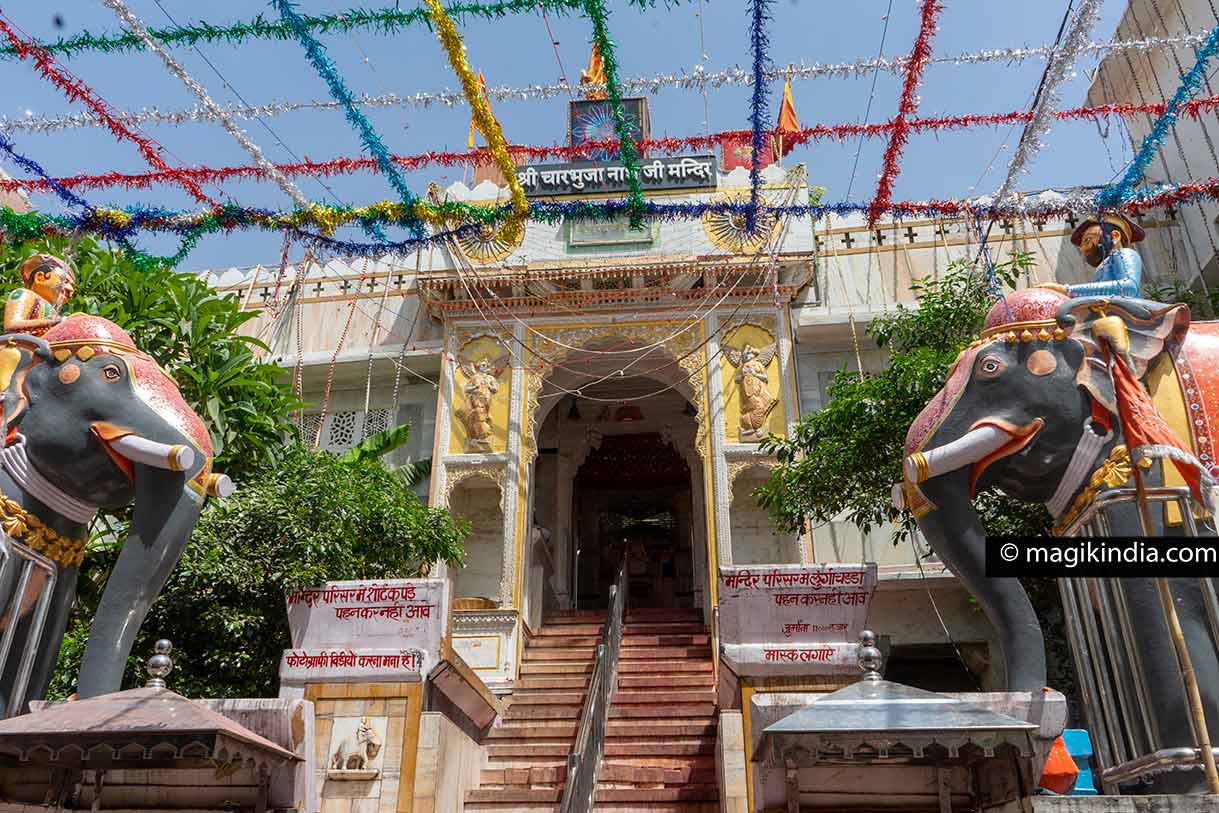
The entrance to the temple flanked by two massive elephants
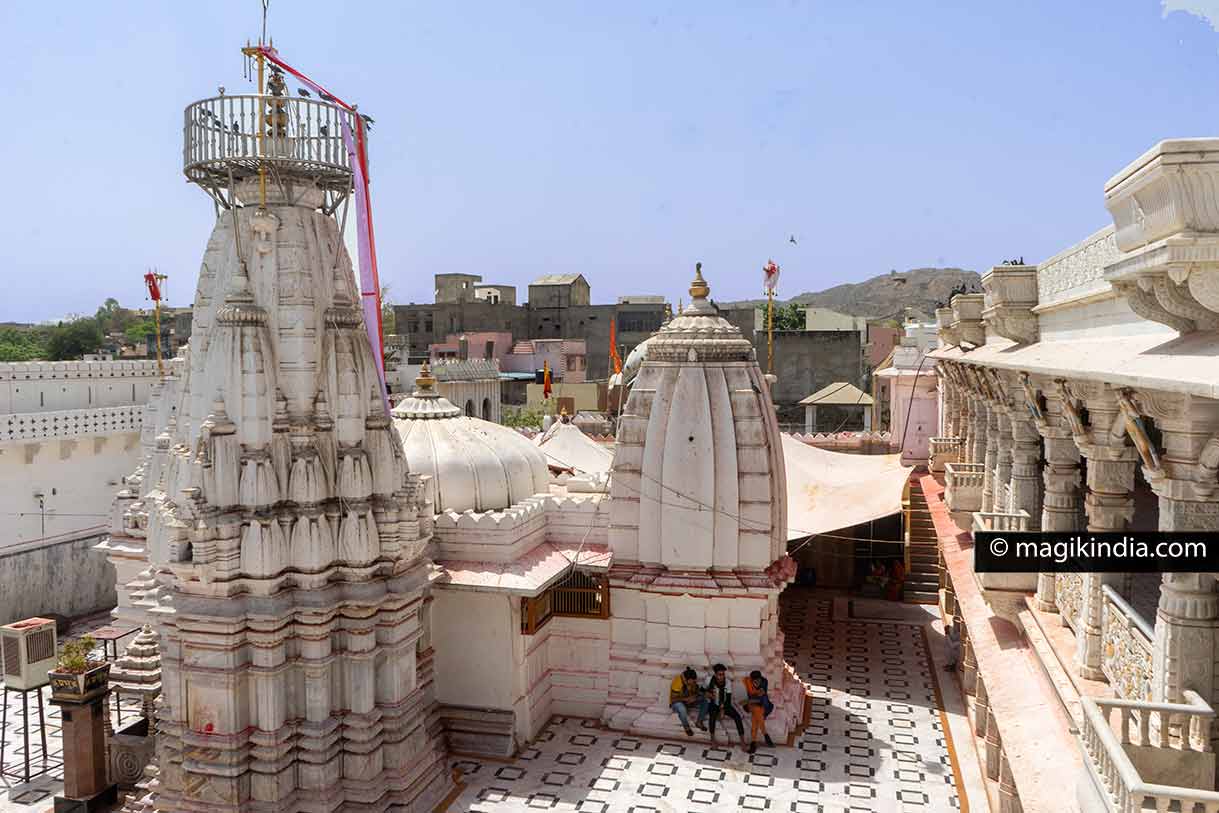
Charbhuja Garhbor temple

Charbhuja, the idol of the temple, representing Lord Vishnu
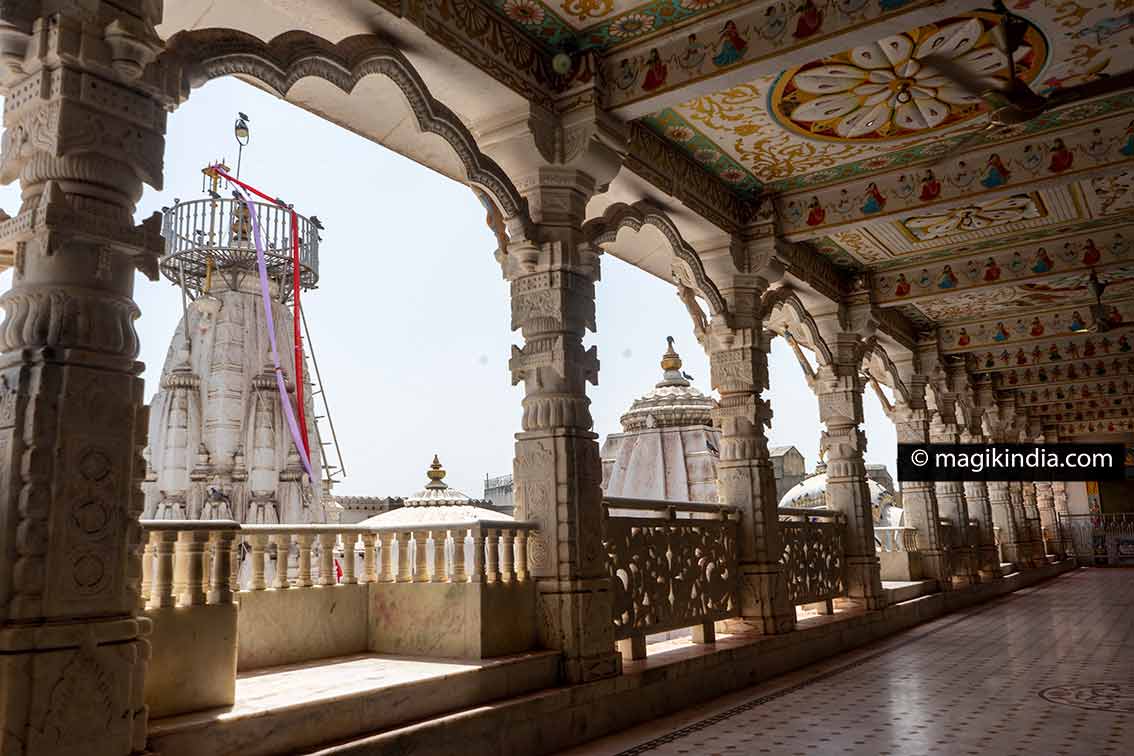
La galerie sur le côté du temple
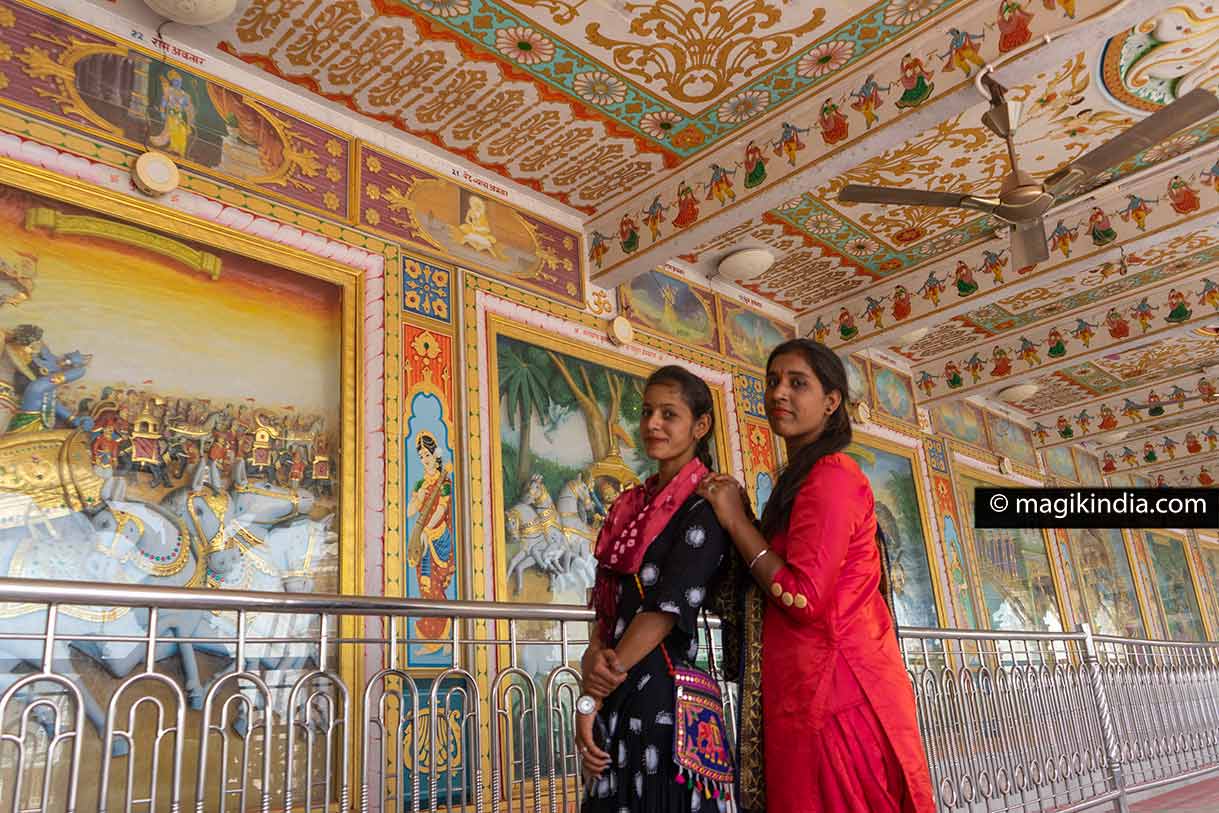
Girls posing in front of the frescoes in the gallery where you can see several scenes from the Mahabaratha

The Nakkar Khana, the tower where musicians play dholak and shehnai during festivals
The Gurjars, the guardians of the temple
The Gurjars or Gujjars are originally a pastoral community. It is a heterogeneous group that differentiates itself in terms of religion, profession and socio-economic status.
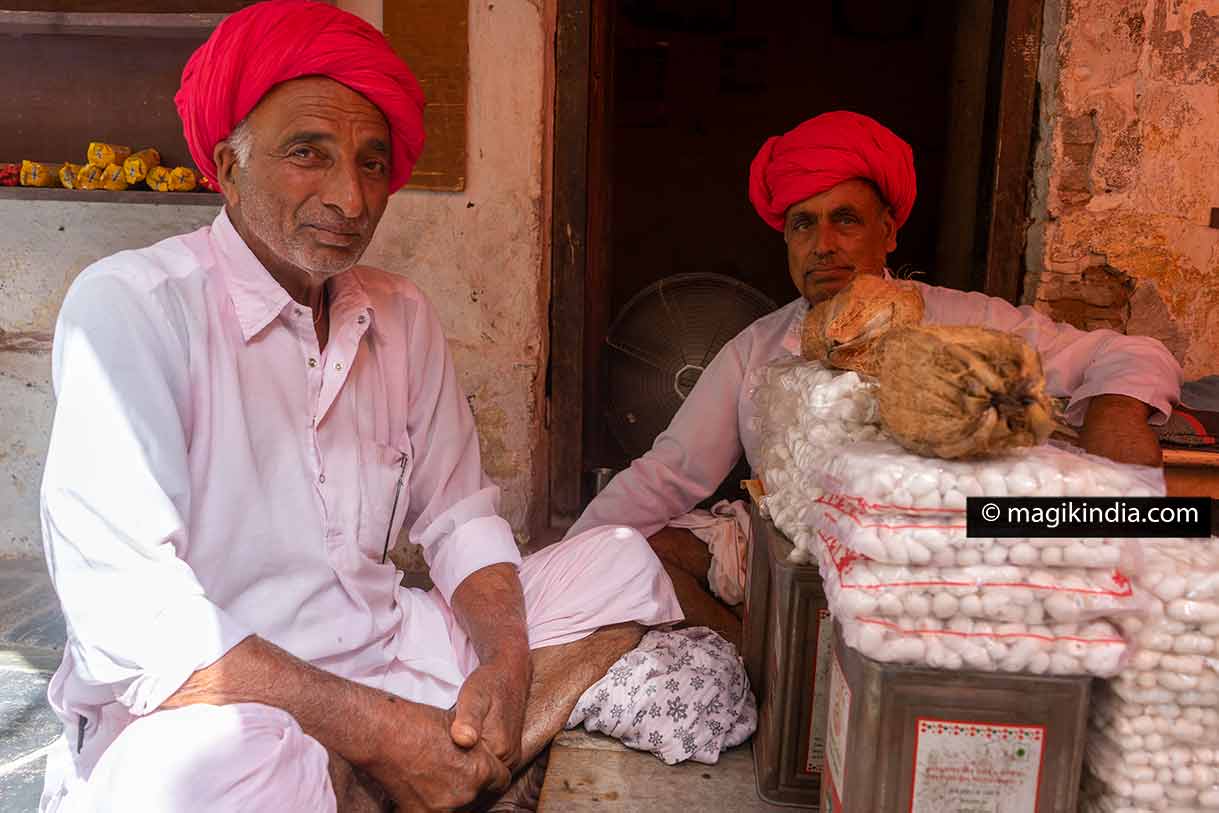
Gurjar men in their shop
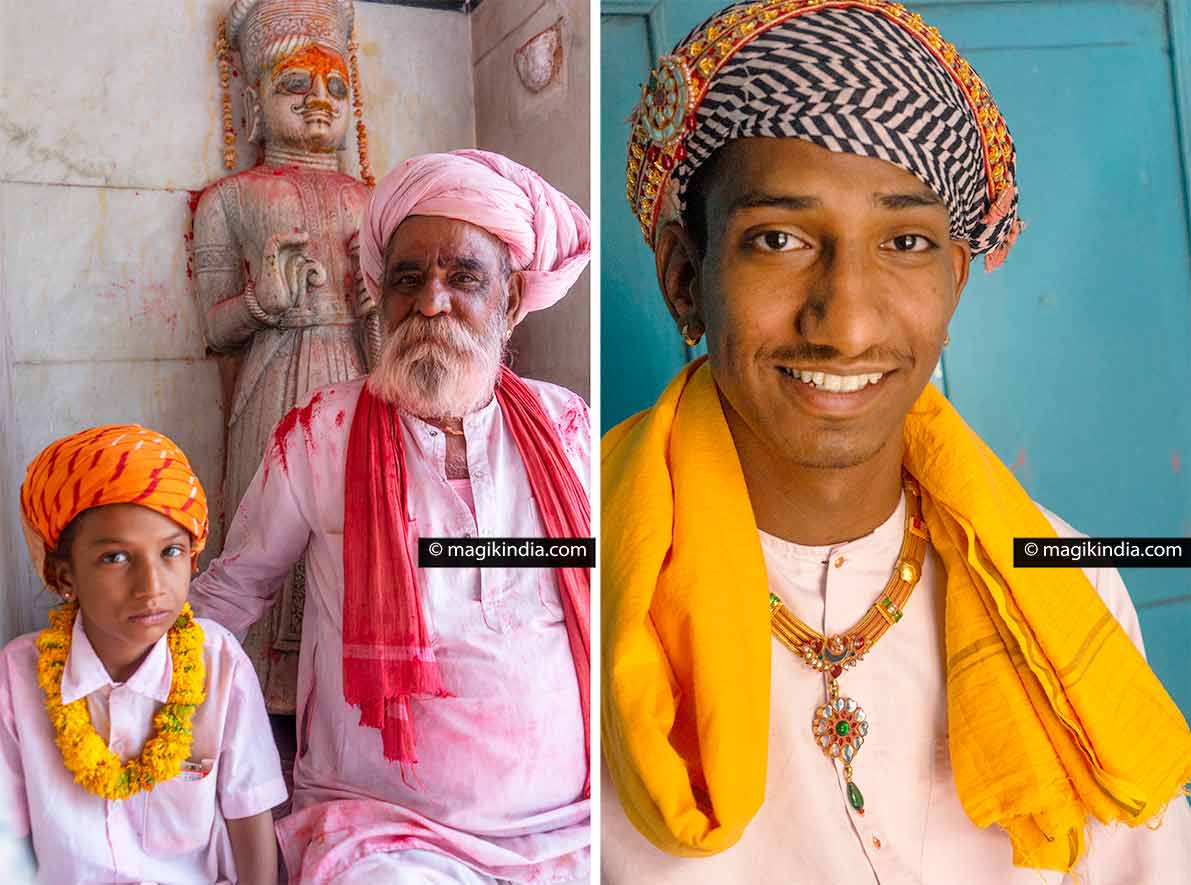
Mangal Lal ji Gurjar with his grandson and Kishan Gurjar who kindly acted as my guide in Garhbor (notice his sublime gold and precious stones necklace)
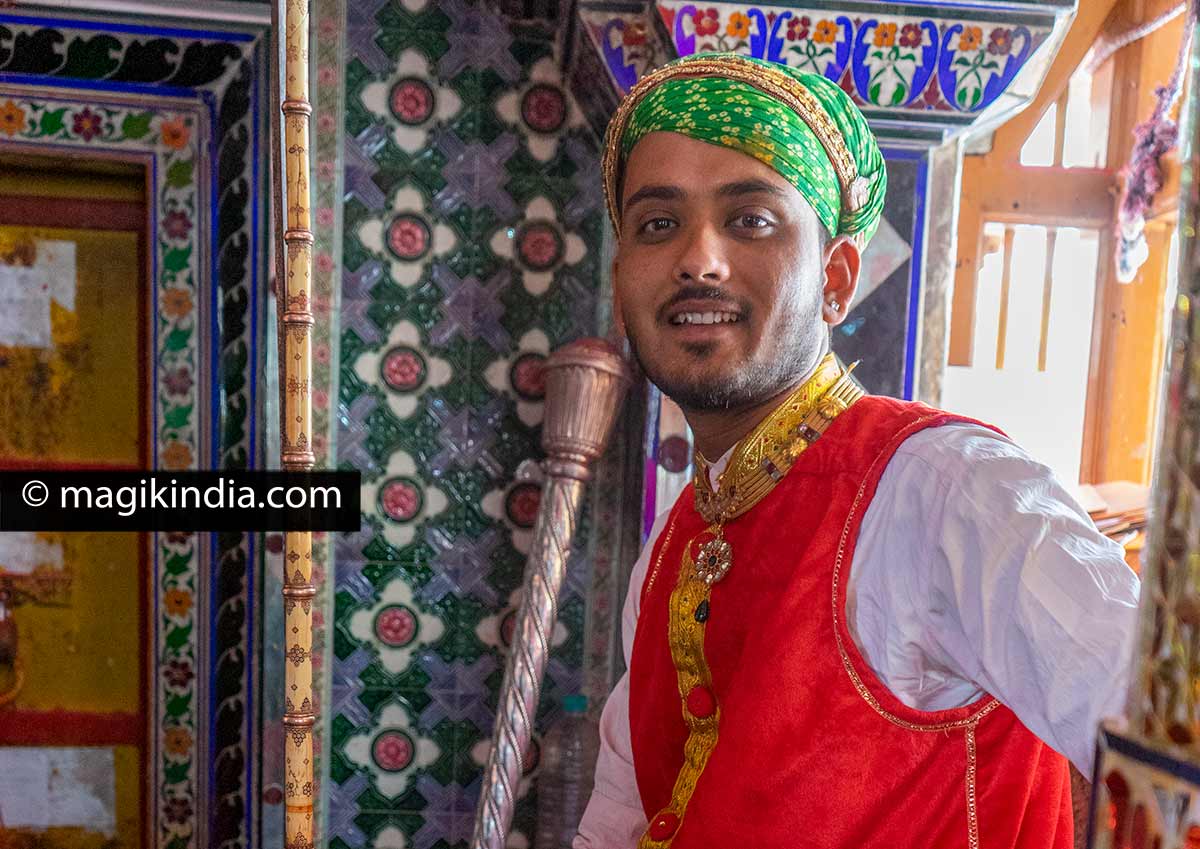
Vikas Gurjar in the shrine of the temple, getting ready for the festivities
Temple Festivals
The temple festivities follow those of the Hindu calendar, however, two festivals stand out, Holi and the Jhal Jhulni.
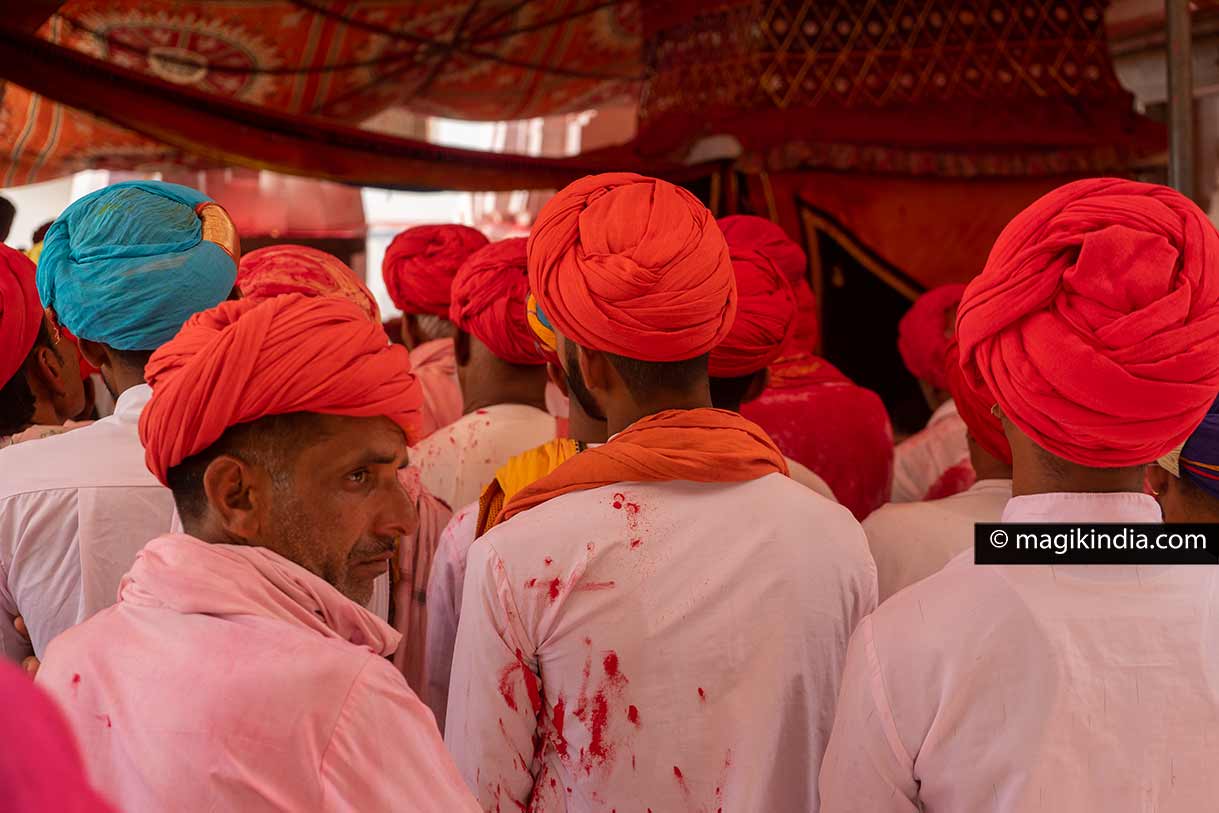
Participants during the Holi festival in Charbhuja
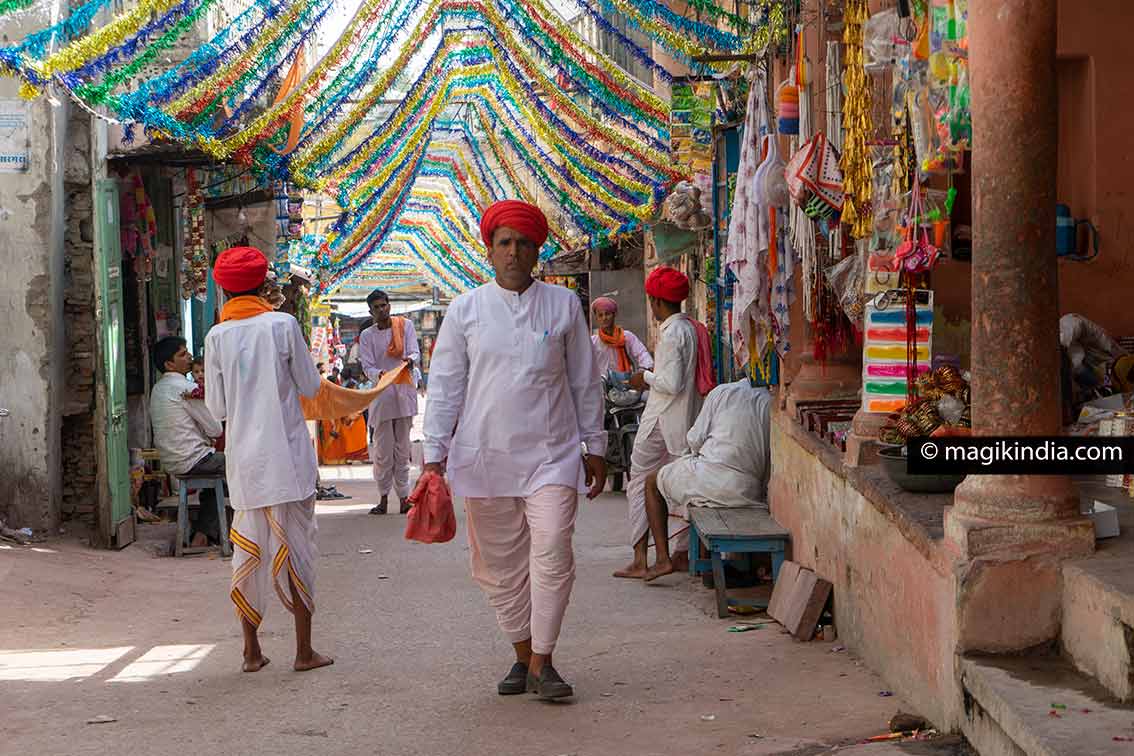
The busy streets of the village during Holi with men in traditional clothes
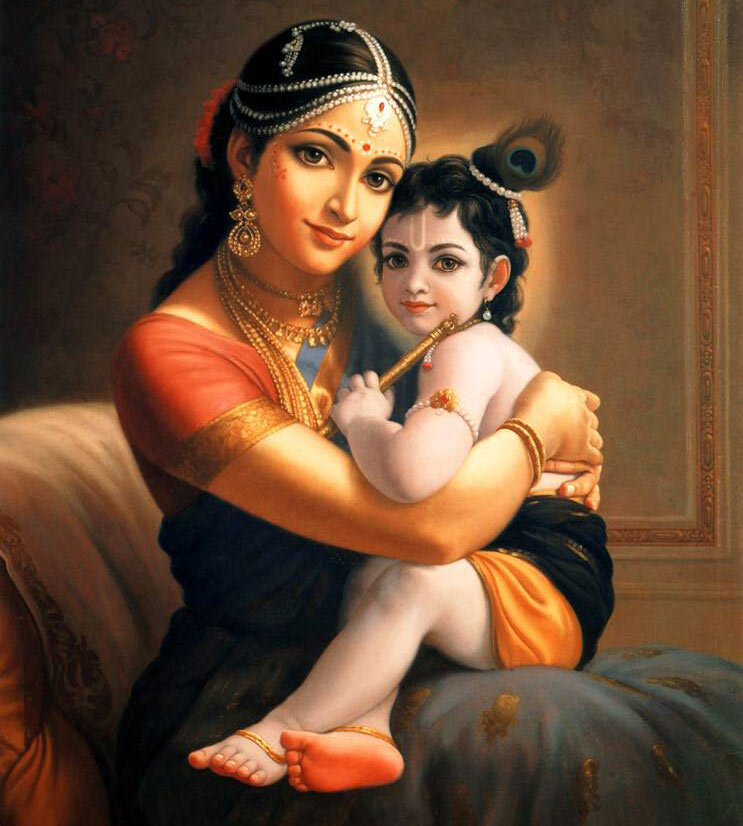
Yashoda & Krishna | Painting: Raja Ravi Varma
In Hinduism, Sutak is a time of seclusion when a child is born (and after a person dies). Family members of the newborn observe a Sutak period of 10 to 20 days depending on the community. They refrain from going to temples or attending ceremonies, for example. However, the general environment is jubilant and joyful. The new mother stays in her room with her newborn baby and they don’t go outside the house. The reason for this is that in ancient times there were many incurable diseases; this isolation allowed both mother and child not to be contaminated during a stage of physical weakness.
On Jhal Jhulni, the Uthsavar, the “double” of the temple statue, goes out in procession to Lake Dooth Talai, one kilometer from the village, in a silver palanquin carried by Gurjar men. The very compact crowd moves with difficulty while the powders of color break over the participants, so much so that after the procession, the streets of the village seem covered with a thick pink carpet. The statue’s clothes are washed in the lake and then, after several rituals, the idol is returned to the temple. Jhal Jhulni is undoubtedly one of the festivals of Rajasthan not to be missed!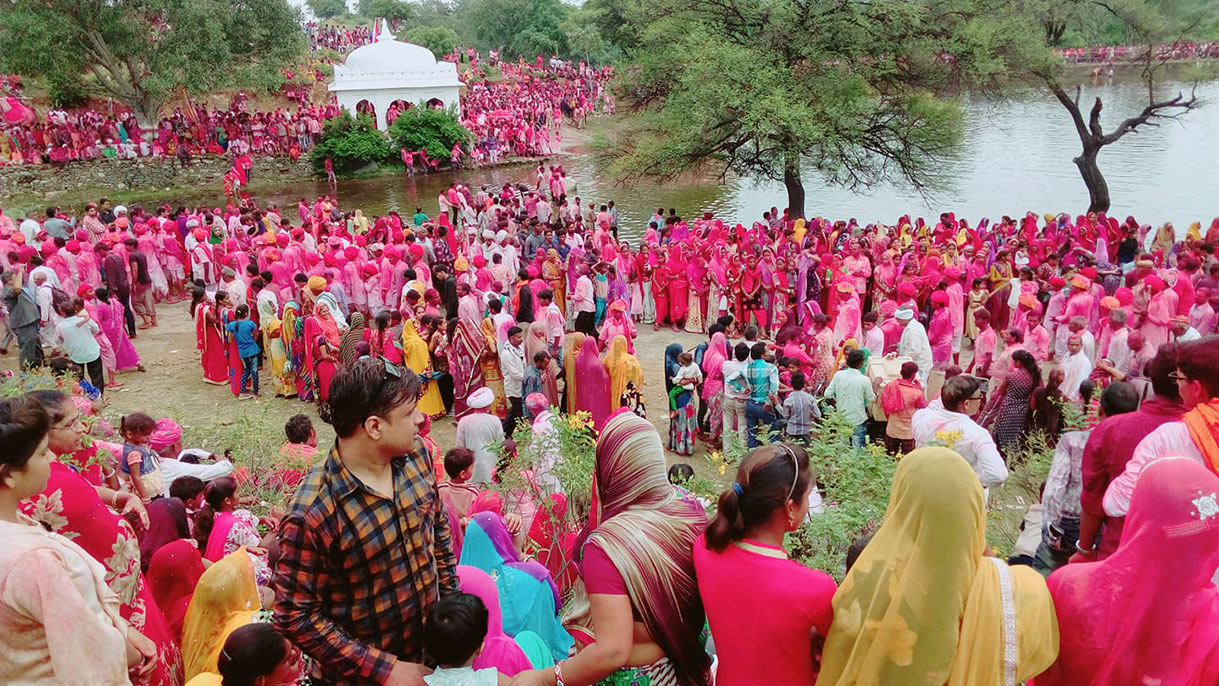
Crowds around Garhbor Lake, waiting for the procession | Photo credit : prakash.gurjar

